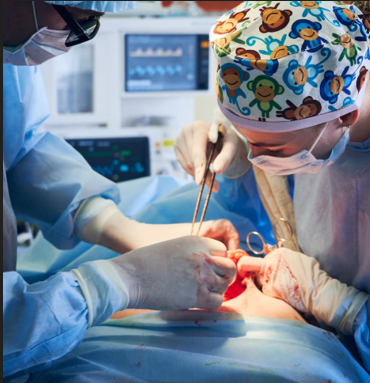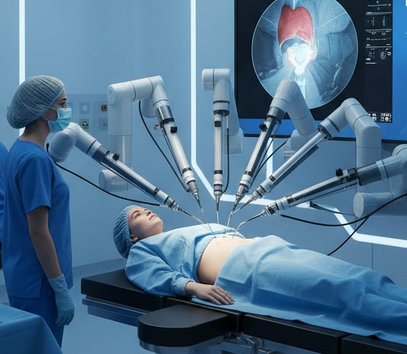Treatment Overview
The Laser-Assisted Laparoscopic Ovarian Cyst Removal Program in Korea is a cutting-edge surgical approach that combines the precision of laparoscopic surgery with advanced laser technology. This innovative technique offers highly targeted excision of ovarian cysts while preserving ovarian tissue and minimizing trauma, bleeding, and recovery time.
Ovarian cysts—fluid-filled sacs forming on or inside the ovaries—are a common gynecological condition affecting women of all ages. While many cysts resolve without intervention, persistent, large, symptomatic, or complex cysts often require surgical removal. Korea has emerged as a world leader in laser-assisted minimally invasive gynecologic surgery, offering patients unparalleled accuracy, reduced recovery times, and superior outcomes.
Prominent hospitals such as Samsung Medical Center, Asan Medical Center, Severance Hospital, CHA Bundang Women’s Hospital, and Ewha Womans University Mokdong Hospital have integrated laser-assisted laparoscopic techniques into their gynecology programs. These centers offer state-of-the-art equipment, expert surgical teams, and patient-focused care for optimal results.
Purpose & Benefits
The primary goal of the laser-assisted laparoscopic ovarian cyst removal program in Korea is to achieve complete cyst excision while preserving ovarian function and fertility. By integrating laser precision with minimally invasive laparoscopy, this approach delivers highly effective results with fewer complications and faster recovery.
Key benefits include:
- Precision Removal: Laser technology allows highly accurate excision, reducing damage to surrounding healthy ovarian tissue.
- Fertility Preservation: Focused cyst removal minimizes ovarian injury, maintaining reproductive potential.
- Minimal Invasiveness: Small incisions lead to reduced pain, minimal scarring, and faster healing.
- Short Recovery Time: Patients often return to normal activities within 1–2 weeks.
- Reduced Bleeding: Laser energy coagulates blood vessels during surgery, minimizing blood loss.
- Lower Risk of Adhesions: Precision laser excision decreases tissue trauma, lowering adhesion formation.
- Personalized Care: Treatment plans tailored to individual patient needs.
This laser-assisted approach represents a modern advancement in gynecologic surgery, positioning Korea as a global hub for minimally invasive ovarian cyst removal.
Ideal Candidates
Laser-assisted laparoscopic ovarian cyst removal is suitable for women who require surgical cyst excision and seek a minimally invasive, fertility-preserving option. Ideal candidates include:
- Women with symptomatic ovarian cysts causing pelvic pain or menstrual irregularities.
- Patients with persistent cysts that do not resolve with medication or observation.
- Women with large or complex ovarian cysts.
- Patients with cysts suspected to be borderline or malignant.
- Women wishing to preserve fertility while undergoing surgery.
Korean gynecologic specialists perform detailed preoperative evaluations—using transvaginal ultrasound, MRI, and laboratory tests—to design a customized surgical approach that ensures safe and precise removal.
Possible Risks & Complications
Although laser-assisted laparoscopic ovarian cyst removal is highly safe and effective, possible risks include:
- Bleeding: Rare but possible during surgery.
- Infection: Minimally invasive methods reduce infection risk.
- Adhesion Formation: Rare due to the precise nature of laser-assisted surgery but still possible.
- Damage to Surrounding Organs: Extremely rare with advanced laparoscopic laser technology.
- Recurrence of Cysts: Possible depending on cyst type and underlying pathology.
Korean surgical teams mitigate risks with careful planning, high-definition imaging, and advanced laser equipment.
Techniques Used
The laser-assisted laparoscopic ovarian cystectomy program in Korea employs advanced techniques to ensure precision and safety:
- High-Definition Laparoscopy: Provides magnified, clear visualization of ovarian tissue and cysts.
- Laser Energy Devices: Deliver focused energy to excise cysts precisely while coagulating vessels to prevent bleeding.
- Microsurgical Instruments: Allow targeted cyst removal with minimal ovarian damage.
- Single-Port or Multi-Port Access: Chosen according to cyst size and complexity.
- Intraoperative Imaging: Confirms complete cyst removal and ovarian integrity.
This combination of advanced laparoscopy and laser technology delivers superior surgical outcomes with minimal patient discomfort.
Recovery & Aftercare
Laser-assisted laparoscopic ovarian cyst removal is designed for rapid recovery. Most patients can resume normal activities within one to two weeks following surgery.
Postoperative care includes:
- Short hospital stay (typically 1–2 days).
- Personalized pain management.
- Early mobilization to promote recovery.
- Detailed postoperative instructions including diet and incision care.
- Follow-up imaging to confirm cyst removal and monitor ovarian health.
Korean hospitals ensure thorough aftercare and patient education to maximize results and long-term health.
Results & Longevity
Laser-assisted laparoscopic ovarian cyst removal provides excellent results with reduced complications, shorter recovery, and preserved ovarian function. Korean hospitals report high success rates and high patient satisfaction.
Patients benefit from relief of symptoms, preserved fertility, and improved quality of life. Recurrence rates are minimized through precise excision and tailored surgical approaches, supported by detailed postoperative follow-up.
Treatment Process in Korea
- Consultation: Comprehensive evaluation, medical history review, and imaging.
- Preoperative Planning: Personalized surgical strategy based on cyst type and patient needs.
- Surgical Procedure: Laser-assisted laparoscopic excision using advanced high-definition imaging and microsurgical tools.
- Recovery: Short hospital stay with tailored aftercare.
- Follow-Up: Imaging and consultations to ensure recovery and ovarian health.
Korean hospitals ensure this process is seamless, efficient, and patient-centered.
Cost Range
Costs for laser-assisted laparoscopic ovarian cyst removal in Korea vary depending on cyst complexity and hospital:
- Standard Laparoscopic Cystectomy: ₩4,500,000 – ₩7,500,000 KRW ($3,300 – $5,500 USD)
- Laser-Assisted Laparoscopic Cystectomy: ₩9,000,000 – ₩13,000,000 KRW ($6,800 – $9,800 USD)
These costs reflect Korea’s high-quality surgical care, advanced technology, and patient-centered services.
Popular Clinics for Laser-Assisted Laparoscopic Ovarian Cyst Removal in Korea
- Samsung Medical Center – Leaders in laser-assisted gynecologic surgery.
- Asan Medical Center – Specialists in fertility-preserving minimally invasive surgery.
- Severance Hospital – Known for precision and innovation.
- CHA Bundang Women’s Hospital – Experts in advanced laparoscopic procedures.
- Ewha Womans University Mokdong Hospital – Combines innovation with compassionate care.




